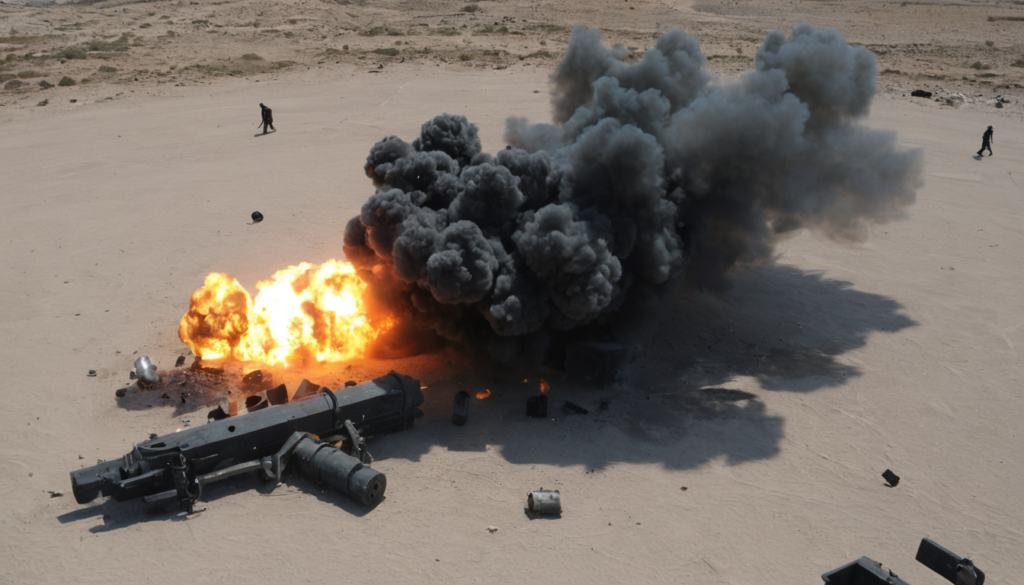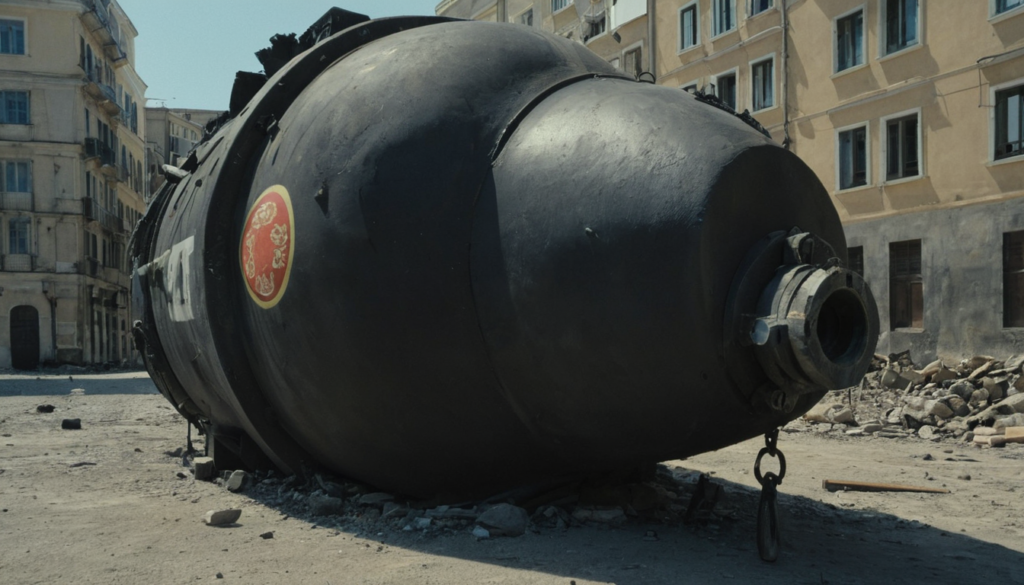Efp bomb The term “EFP bomb” refers to Explosively Formed Projectiles, a type of improvised explosive device (IED) used in modern warfare. EFP bombs have become one of the most dangerous weapons in the arsenal of insurgent groups and unconventional forces due to their capability to penetrate armor, cause extensive damage, and wreak havoc. This article delves into the origins, mechanics, and the devastating impact of EFP bombs on both military operations and civilian infrastructure.
Origins and Evolution of EFP Bombs
Explosively Formed Projectiles were initially developed by military forces during the 20th century, with their roots tracing back to anti-tank weapons designed to defeat armored vehicles efp bomb. However, the concept of using explosives to mold and project a metal slug or projectile has been known since World War II. The evolution of EFP bomb has been fueled by continuous advancements in explosives and metal-shaping technologies, making them more effective in penetrating the armor of military vehicles, including tanks, efp bomb armored personnel carriers, and even buildings with reinforced concrete.
The use of EFP bombs gained prominence in the early 2000s, particularly in Iraq and Afghanistan, where insurgent groups began deploying them against coalition forces. These devices proved to be a significant challenge to traditional countermeasures due to their ability to penetrate even the most sophisticated armored vehicles efp bomb. As insurgent groups grew more adept at manufacturing and deploying these bombs, they became a weapon of choice for asymmetric warfare, giving smaller, less-equipped forces the ability to challenge larger and better-equipped military units.
How EFP Bombs Work
At its core, an EFP bomb consists of a casing filled with explosives and a concave metal plate. When the explosives are detonated, the force of the explosion causes the metal plate to deform into a high-speed projectile or slug, which is capable of penetrating armor efp bomb. The speed and force with which the projectile is formed depend on the amount of explosives used, the shape of the metal plate, and the precision with which the bomb is constructed.

Unlike traditional IEDs, which rely on shrapnel and blast force to cause damage, EFP bombs are designed specifically to punch through heavy armor. When the concave metal plate is transformed into a projectile, it can travel at speeds of up to several kilometers per second efp bomb. This makes EFPs highly effective against military vehicles that are designed to withstand conventional explosives and small arms fire.
The key to the effectiveness of EFP bombs lies in the physics of explosive shaping. By carefully designing the curvature of the metal plate and the placement of the explosive charge, bomb makers can control the size, speed, and shape of the projectile. This allows them to tailor the weapon to specific targets, whether it be heavily armored tanks, light vehicles, or even structures efp bomb. EFPs can be deployed in various ways, including roadside bombs, mines, and vehicle-borne IEDs, making them highly versatile on the battlefield.
The Impact of EFP Bombs on Modern Warfare
The introduction of EFP bombs into modern warfare has had a profound impact on military tactics and counterinsurgency efforts. In the conflicts in Iraq and Afghanistan, for example, EFPs accounted for a significant proportion of the casualties sustained by coalition forces efp bomb. The ability of these weapons to penetrate the armor of vehicles such as the MRAP (Mine-Resistant Ambush Protected) vehicle meant that even the most heavily fortified convoys were vulnerable to attack.
EFP bombs have forced military forces to adapt their tactics in order to mitigate their effectiveness. This has included the development of advanced countermeasures, such as reactive armor, which is designed to disrupt the formation of the EFP projectile before it can strike the vehicle efp bomb. Additionally, military forces have employed tactics such as altering routes and patterns of movement in order to avoid areas where EFPs are likely to be deployed.
However, despite these efforts, EFP bombs remain a persistent threat in modern conflict zones. Their relatively simple construction and the availability of materials make them easy to manufacture, and their effectiveness means that insurgent groups continue to use them as a means of inflicting damage on militaries that possess overwhelming technological superiority efp bomb. This has created a constant challenge for military planners and strategists, who must find ways to neutralize the threat posed by EFPs without compromising the effectiveness of their operations.

The Role of EFP Bombs in Asymmetric Warfare
One of the most significant factors contributing to the widespread use of EFP bombs is their role in asymmetric warfare. Asymmetric warfare refers to conflict between two parties of unequal strength, where the weaker party uses unconventional tactics to offset the advantages of the stronger force. In this context, EFP bombs provide insurgent groups with a means of challenging conventional military forces by targeting their most vulnerable assets: armored vehicles and supply convoys.
In asymmetric warfare, the goal is often not to defeat the enemy outright, but to inflict enough damage and create enough uncertainty to undermine the enemy’s morale and will to fight. EFP bombs are particularly well-suited to this purpose, as they can be deployed in ways that make them difficult to detect and counter. For example, efp bomb insurgent groups have used EFPs to target supply convoys, striking at the logistical lifeline of military forces and causing disruptions that can have far-reaching effects on the conduct of operations.
Moreover, the psychological impact of EFP bombs cannot be underestimated. The knowledge that a convoy could be struck by an undetectable and highly destructive weapon at any moment creates a sense of vulnerability among soldiers, which can undermine their confidence and ability to carry out their missions efp bomb. This is a key element of asymmetric warfare, where the objective is not just to inflict physical damage, but to erode the resolve of the opposing force.
Countering the EFP Threat
Efforts to counter the threat posed by EFP bombs have focused on a combination of technological and tactical solutions. On the technological front, advancements in vehicle armor and detection systems have been developed to mitigate the effects of EFPs. Reactive armor, for example, consists of explosive tiles that are triggered by the impact of an EFP, disrupting the formation of the projectile before it can penetrate the vehicle efp bomb. Additionally, the development of electronic jamming devices has helped to disrupt the signals used to remotely detonate EFPs, reducing the likelihood of successful attacks.

Tactically, military forces have adopted a variety of strategies to minimize their exposure to EFP bombs. This includes altering movement patterns, avoiding predictable routes, and employing aerial surveillance to identify potential EFP deployment sites efp bomb. These measures, combined with intelligence gathering and cooperation with local communities, have helped to reduce the effectiveness of EFP attacks, but the threat remains an ever-present challenge in conflict zones.
Conclusion
EFP bombs represent a highly effective and deadly weapon in modern warfare, with the potential to penetrate armor and cause significant damage to both military forces and civilian infrastructure efp bomb. Their role in asymmetric warfare has made them a weapon of choice for insurgent groups, and despite advancements in countermeasures, EFPs continue to pose a significant threat on the battlefield. Understanding the mechanics, impact, and strategies for countering EFP bombs is crucial for military forces